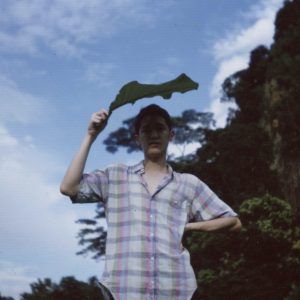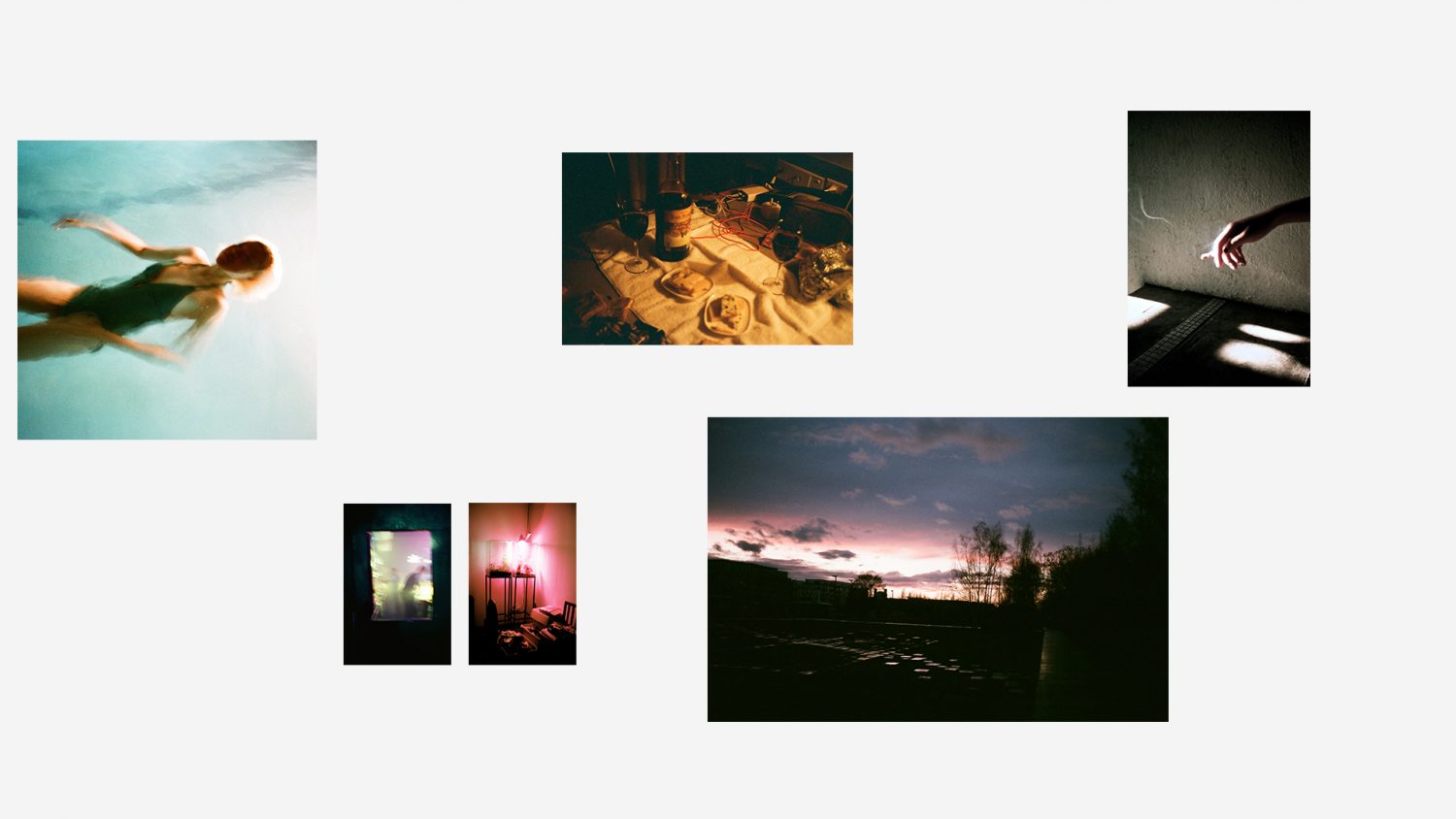Featuring works by Lee Chang Ming
In collaboration with Dennese Victoria and Samantha Yap
Objectifs Store
1 Mar to 29 Jul 2022
Free admission
Conversations is a site-specific installation at the Objectifs store by Lee Chang Ming, as a part of Site Unseen — an adapted studio residency programme by Objectifs that invites artists and image makers to create site-specific image-based works for spaces outside of a conventional gallery. Through this, it proposes new ways of encountering everyday spaces that have been overlooked.
“As a photographer and publisher, I spend time editing and sequencing images, thinking about how viewers will encounter the photos — whether it is in a physical gallery, book, or online — and how words should accompany it. These encounters are filtered through my subjective reading of the images, which led me to question: how do images get their meaning, and who decides what it means?
For this project, I am interested in exploring the relationship between photography, text, and subjectivity. When meanings in images and text are combined, it can evoke thoughts or feelings not present in either one. There will be three stages for this project. First, I will present personal photographs in Objectifs’ space without much context. Second, I will get a collaborator to respond to those images in the physical space with text. Lastly, I will get another collaborator to contribute text in response to the same set of photographs, but presented in the form of a zine.”
Read on for a short interview with Chang Ming to find out about the process behind his installation, as well as a list of items that he had curated for our store.
- What gave rise to your interest in exploring the relationship between images and text and how they could shape one’s interpretation of a body of work?
As a photographer and publisher I spend time editing and sequencing images, thinking about how viewers will encounter the photos — whether it is in a physical gallery, book, or online — and how words should accompany it. These encounters are filtered through my subjective reading of the images, which led me to question: how do images get their meaning and who decides what it means?
Photographs in our everyday lives are often associated with some kind of descriptive truth or personal documentation, however I wanted to look at the malleability of the meanings that photographs can have. If we remove text or add unexpected kinds of words, what new meanings can emerge from there?
2. How did you decide on the placement of the work and text?
The invitation for Site Unseen was to present works outside a conventional gallery such as the retail space, which was rather exciting yet challenging! There were considerations like how the retail space is already visually noisy with the many items on display which will affect how people would look at the images or if they would even recognise if it was part of this project.
First, I shortlisted possible images I wanted to present, then I visited the site several times to get a better sense of the space and imagine how certain images might work in the space. As for the exact placement of my photographs, it was more of an intuitive approach of how the images feel in the space. I planned most of it beforehand, but during the installation there were some adjustments as well. If someone else had to use the same set of images to decide on the placement it would look different, so there’s already a layer of subjectivity when I decide on the positions, size and number of photographs to show. For the placement of text, I will leave it to my collaborator Samantha to decide.
3. This project features a collaboration with Dennese Victoria and Samantha Yap. How are these collaborators involved, and why is collaboration an important aspect of this project?
For this project, I wanted to explore the relationship between photography, text, and subjectivity. I decided to do the project in three stages as sort of an experiment. First, I will present my personal photographs in Objectifs’ space without much context. The installation of images are meant to be open-ended to let visitors encounter it in their own way. Second, I will invite Samantha to respond to the images with text, which will also be placed in the same space in relation to the photographs. The text can be any form of writing and can be directly or indirectly related to my images. Third, Dennese will respond to the same set of photographs but in the form of a publication. Parallel to how Samantha will respond to the photographs in a physical space, I see the page as another kind of space for images and text to exist together.
As to why collaboration is important, I think taking photographs for my personal projects is often a solitary process. Most of the images shown for this project were taken over the past decade in my 20s — fragments of memories with friends, traces of feelings and small moments I wanted to hold on to. It’s easy to attach sentimental meanings to images.
When I first contacted Dennese for this project, she asked me what I wanted to feel with this project. I wasn’t able to give a proper answer, but perhaps what I want is to move on. So, in a way, I want to let go of some control over how my images are understood by others and myself. Instead of holding on to the photographs selfishly, I want to see if I can start “conversations” with my collaborators and the viewers.
4. Given that your installation explores a variety of mediums ranging from images on the wall, written text to a publication, how do you think these different encounters affect how an image is perceived?
When meanings in images and text are put together, it can evoke thoughts or feelings not present in either one. The space between the two descriptive systems (to borrow loosely from Martha Rosler) of images and text opens up possibilities in new meanings.
For example, the photograph on its own may be understood in one way, but when a series of images are presented together in the same wall space or book, it also affects how each image is understood. Adding text in relation to the images, it may introduce a narrative or mood that again affects the reading of the image. I wanted to try to leave things open ended so there is room for both the collaborators and viewers to encounter the images in their own way.
5. Tell us about your artist picks from the store’s offerings
a) The Quickening by Ying Ang
Intensely personal, poetic, and powerful. All the things I love about the photobook as a medium. You can really tell that this handmade book was crafted with so much love and care throughout the whole process. The book manages to mix risograph and offset printing in a surprisingly good way which I’ve not seen done before that makes sense for the images and subject.
b) Adverbia by Dwi Asrul Fajar
I collaborated with Asrul to design and publish this. I think there is some relation between this zine and the project I’m showing at Objectifs because of this idea of open-endedness of images. I designed it such that there are two booklets which can be either viewed individually or together. Viewers can open up the pages from the two booklets into one another to create their own diptychs
c) If you want to quit, let’s do it tomorrow by Leung Yiu Hong
I like how understated and muted this photobook is. Quiet images and design speaking about a sense of solitude in the city. The cover is really lovely with a sandpapery texture and the title can only be seen if you hold it close to you at an angle.
d) Invisible by Angus Chen
Cinematic and intimate images from this Taiwan-based photographer. There’s a certain spontaneous and moody energy to the images that I like.
e) She Never Rode That Trishaw Again by Sim Chi Yin
Gathering old family photos and oral history excerpts, the publication recontextualizes the materials in surprising and thoughtful ways which take advantage of the book form. Text and postcards are hidden in between pages, perhaps alluding to the idea of hidden family trauma that threads through the book. I liked how personal the writing was, which helps tie the archival photos together. Relating this back to my project about images and text, if we remove all the text in the book, the photos would not have the same meaning, and likewise if we remove the photos the impact of the text will be different. I sometimes use found imagery in my projects, so this was really nice to see how this project was materialised.
f) Staircases by Khiev Kanel
I worked with Kanel to design and publish his series Staircases. I like how the photos appear simple and almost repetitive, but if you look closer and read his write-up you realise it but speaks to a much larger social issue of urban development and geopolitical forces. Also, it’s this kind of project that requires text to contextualise the significance of the photos. I recall selling this at an art book far (where it’s common for visitors to just pick stuff up and browse quickly) and some visitor commented to a friend, “Oh, it’s just staircases.” It’s not just staircases if you look closer to try to understand.
About the artist

About the collaborators
Born in October 1991, Dennese Victoria is an artist living and working in the Philippines. Working across photography, moving image and installation, her work touches on truth, memory, personal history, and the exchanges that occur between herself and those that are reached by the forming and the sharing of her work.
Receiving a degree in Journalism from the University of Santo Tomas in Manila in 2012, she has since worked as an educator, cultural worker, and cinematographer, including filming for Shireen Senoʼs second feature, Nervous Translation.
Samantha Yap shuffles between writing and curation. She is interested in forms of reciprocity such as the ethics of care, love, and vulnerability as well as the exploration of feminist perspectives across writing and visual culture. Her recent exhibitions include Ongoingness (2022), Gillman Barracks, and Time Passes (2020), National Gallery Singapore. Her writing is featured in the poetry anthology My Lot is a Sky alongside other exhibition catalogues. She graduated with a BA (Hons) in English Literature and Art History from the Nanyang Technological University of Singapore.

